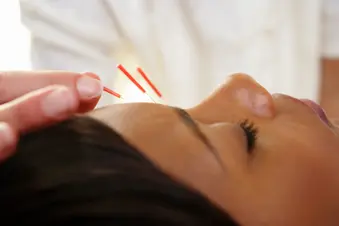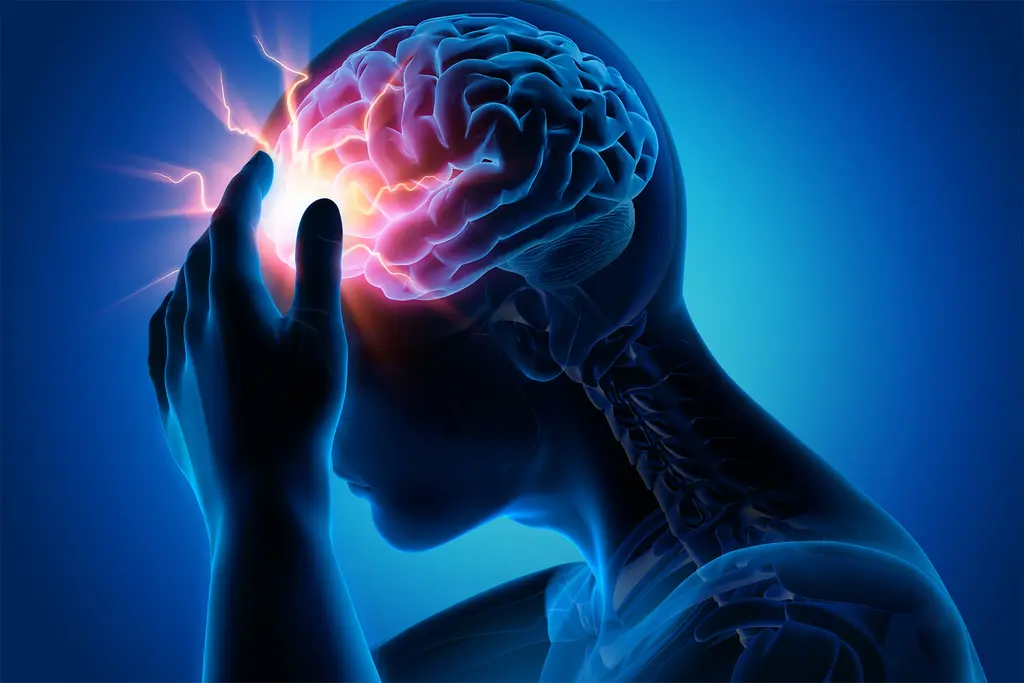
What can you do if your treatments for migraine pain don’t seem to work? Your doctor can suggest other treatments that may be more effective for you. For many people, combining medication and natural remedies is an effective way to manage migraine pain.
Why do migraine treatments fail?
Here are some reasons why your migraine treatment may seem to not work:
- Incomplete diagnosis. There are different types of migraine. They each respond to different treatments. You may need to see a headache specialist who can correctly diagnose the type you have and prescribe the correct treatment for it.
- Incorrect diagnosis. Your headaches may not be migraines, but another type of headache or pain condition.
- Other conditions. You may have another, undiagnosed health condition that needs to be treated before you can effectively treat your migraine.
Unidentified triggers
Are you sure you know all the triggers for your migraine attacks? Talk to your doctor about other triggers you may have overlooked. Keep a journal to track when your headaches happen, so you can identify possible triggers that you can avoid.
Expectations
- Do you expect the right results from your medicine? Migraine medicine taken during an attack may not wipe out the pain right away.
- Preventive treatments for migraine also need time to work. Taking one pill for a few days won’t mean you never have another headache. You may need to take your migraine medicine for up to 8 weeks to see if it works before you switch to another drug.
- During a migraine, you may have nausea or vomiting that stops your stomach from absorbing the medicine. Your doctor may prescribe a nasal spray or an injected medicine for pain relief that may work better. They may also prescribe a medication to help reduce the symptoms of nausea and vomiting during a migraine.
Medications: Other Options
Here are some medications your doctor can prescribe for migraine pain if your first migraine treatment isn’t working for you.
Most people with migraines start treatment with over-the-counter (OTC) medications like acetaminophen or a nonsteroidal anti-inflammatory drug or NSAID (aspirin, diclofenac, ibuprofen, or naproxen).
An OTC medicine that combines either acetaminophen or aspirin with caffeine may work better for some people.
When in pain, take OTC pain medicine as directed on the label. These won’t necessarily reduce how often migraines happen, but they work to stop the pain. They can have serious side effects, like liver or kidney damage or stomach bleeding.
Prescription NSAIDS
NSAIDS (nonsteroidal anti-inflammatory drugs) are medications that block the effects of certain chemicals made in the body that can cause inflammation and pain. Your doctor may prescribe one of the following:
- Celecoxib (Celebrex, Elyxyb)
- Diclofenac potassium (Cambia, Cataflam)
- Diclofenac sodium (Voltaren, Zipsor)
- Fenoprofen (Nalfon)
- Flurbiprofen (Ocufen)
- Indomethacin (Indocin)
- Ketorolac (Toradol)
- Mefenamic acid (Ponstel)
- Nabumetone
Triptans
If your OTC medicines haven’t worked, your doctor may prescribe stronger medications called triptans, including:
- Almotriptan (Axert)
- Eletriptan (Relpax)
- Frovatriptan (Frova)
- Naratriptan (Amerge)
- Rizatriptan (Maxalt)
- Sumatriptan (Imitrex, Onzetra Xsail, Sumavel DosePro, Tosymra, Zembrace SymTouch)
- Zolmitriptan (Zomig)
If a triptan isn’t effective for you, your doctor may prescribe a combination treatment of a triptan with naproxen (Treximet) that may relieve your pain.
NSAIDS and oral triptans are sometimes more effective when they’re combined.
CGRP inhibitors
Calcitonin gene-related peptide (CGRP) is a protein that your body makes around your brain. It can cause inflammation and intense migraine pain.
A new class of migraine treatments called CGRP inhibitors target and block this protein or its receptor to stop migraine attacks. You can also take some CGRP inhibitors to prevent migraines and help make them less frequent. For acute migraine treatment you may be prescribed rimegepant (Nurtec) or ubrogepant (Ubrelvy). These are small molecule CGRP antagonists and are taken in pill form. Zavegepant (Zavzpret) is a recently approved CGRP antagonist in the form of a nasal spray. Zavzpret and rimegepant (Nurtec) are also approved for preventing migraines along with other CGRP antagonists discussed later in this article.
Selective 5HT-1F agonists (Ditans)
A newer treatment for acute migraine pain is lasmiditan (Reyvow), a selective 5HT-1F agonist. It’s a pill you take once a day, but not more often than 4 days per month. It’s the first in a new class of drugs called ditans.
Lasmiditan may also be a good option for people who can’t take triptans because of heart conditions. Triptans narrow your blood vessels to ease migraine pain, so they may not be safe for people with cardiovascular disease or poorly controlled high blood pressure. Lasmiditan treats migraine pain without narrowing blood vessels.
Ergot alkaloids
These are a special type of pain reliever used to treat severe, throbbing headaches. Your doctor will prescribe these only if other types of drugs don’t work for you. You may take them as a pill, suppository, or nasal spray.
Antiemetics
These drugs relieve nausea:
- Chlorpromazine (Thorazine)
- Droperidol (Inapsine)
- Metoclopramide (Reglan)
- Prochlorperazine (Compro)
Neurostimulators
Also called neuromodulators, these are devices that can treat an acute migraine already in progress or help prevent migraines. Neurostimulators use electric currents or magnetic action to tamp down the brain waves that set off migraines.
Some neurostimulator devices are portable, but other types are implanted with surgery. They may be a good option for you if other migraine medications haven’t worked, or if you overuse medications without finding any pain relief.
Boomerang effect
If you think your migraine medicine isn’t working to relieve the pain, don’t increase your dose or take it more often to see if that does the trick. Overuse of pain medications can make headaches worse.
Pain drugs with butalbital (Fiorinal, Pronal, or Trinal) or opioids are more likely to cause overuse headaches. That’s because you can build up tolerance to them so they seem less effective.
Preventing Migraines
To keep migraines from happening, your doctor may prescribe one of these medications:
- High blood pressure medicines, including beta-blockers like atenolol (Tenormin), metoprolol (Lopressor), or propranolol (Inderal), or an angiotensin blocker called candesartan (Atacand)
- Anticonvulsants like sodium valproate (Depacon) or topiramate (Topamax)
- Tricyclic antidepressants like amitriptyline (Elavil) or nortriptyline (Pamelor)
- Ketorolac (Toradol), a stronger NSAID
- Calcium channel blockers like verapamil
- CGRP monoclonal antibodies
CGRP antagonists are the newest migraine preventive medications. Rimegepant (Nurtec) and atogepant (Quilpta), small molecule CGRP antagonists, are taken in pill form. The CGRP monoclonal antibodies approved for preventing migraine include erenumab (Aimovig), fremanezumab (Ajovy), eptinezumab (Vyepti) and galcanezumab (Emgality). These are taken by self injection or IV, usually monthly. Zavegepant (Zavzpret) is taken as a nasal spray.
Natural remedies for migraine
Medications aren’t the only way to manage your migraine pain. Natural treatments and lifestyle changes may give relief, too.
Hot or cold treatments: Apply heat or cold to your face, head, or neck. Heating pads can relax tense, tight muscles. Ice packs can numb pain, so your pain feels less intense.
Dark and quiet space: As pain starts, move to a dark, cool, quiet room if possible. Avoid noise and bright light. Try to relax and to sleep if you can.
Caffeine: A small amount of caffeine may ease migraine pain, but don’t overdo it. Too much caffeine can trigger repeat headaches.
Massage therapy: Shiatsu or self-massage to certain pressure points on your head or neck may ease migraine pain.
Relaxation techniques: Stress is a common migraine trigger. Manage it with techniques like biofeedback or meditation.
Herbs and supplements like magnesium or butterbur may help soothe migraine symptoms. Talk to your doctor before trying them.
Acupuncture, an alternative treatment performed by a trained provider, may help relieve long-term pain from migraines.
Show Sources
Photo Credit: Jon Feingersh Photography Inc / Getty Images
SOURCES:
American Migraine Foundation: “What to Do When Migraine Treatment Fails?” “Botox for Migraine,” “Mythbusters: Migraine Remedies,” “What to Know About the New Anti CGRP Migraine Treatment Options,” “Neuromodulation for migraine treatment: an overview,” "ORAL AND INTRANASAL TRIPTANS FOR MIGRAINE." "Non-Steroidal Anti-inflammatory Drugs (NSAIDS) for Acute Migraine Treatment.”
Mayo Clinic: “Migraines: Simple steps to head off the pain,” “Dihydroergotamine (Nasal Route),” “Headache Medicine Ergot-Derivative-Containing (Oral Route, Parenteral Route, Rectal Route).”
American Headache Society: “What to Do When Migraine Treatment Fails.”
Choosing Wisely Canada: “Treating Frequent Headaches With Pain Relievers: Don’t Take Them Too Often.”
American Family Physician: “Acute Migraine Headache: Treatment Strategies.”
Shiatsu Toronto: “Shiatsu Self-Massage for Headaches.”
Harvard Medical School: “Lasmiditan: New first-in-class drug treatment approved for migraine.”
The Journal of Headache and Pain: “Lasmiditan mechanism of action: review of a selective 5HT-1F agonist.”
Innovations in Clinical Neuroscience: “CGRP Inhibitors for Migraine.”
Cleveland Clinic: “Chronic Migraine,” “NSAIDs (Nonsteroidal Anti-Inflammatory Drugs).”
American Journal of Managed Care: “New CGRP Monoclonal Antibodies for Preventive Care.”
